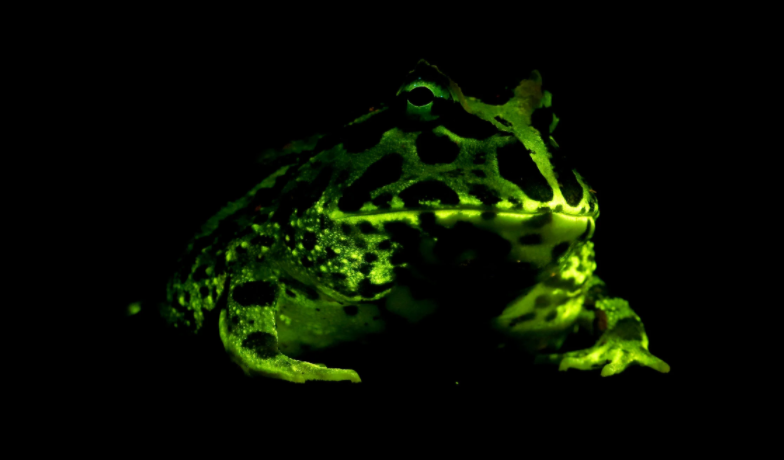- According to a new study, biofluorescence—where an animal emits a fluorescent glow after absorbing high-energy wavelengths of light—is widespread amongst amphibians.
- Researchers Jennifer Y. Lamb and Matthew P. Davis began by exposing salamanders to high-energy blue light and viewed them through yellow filters to see if they glowed. They then continued testing frogs and caecelians (limbless amphibians). They all glowed!


- “So it begs the question, if these bellies are also biofluorescent, then maybe some of their predators can visualize biofluorescence,” said Lamb. “We have to be careful about not falling into the trap of only perceiving the world through our own eyes. Human vision is set to a particular set of wavelengths, and that’s not the case across all animal diversity. And that may not be the case in terms of these amphibians.”
- Currently about one in four species of amphibians are declining, threatened or endangered, this new finding could be a new way to observe these populations at night and help conservationists further study and help protect them. Learn more here.
Nature Photographer Of The Year Announced

The GDT Nature Photographer of the Year 2020 has officially been announced as wildlife photographer Peter Lindel, who captured this stunning image of a sun-drenched European hare in its natural habitat.
Tuning Into Dolphin Chatter Could Boost Conservation Efforts

- Tuning in to the signature ‘whistles’ of dolphins could prove a game-changer in being able to accurately track the movements of this much-loved species.
- A recent study, investigated whether there was a way to attribute unique whistles to individual bottlenose dolphins living in Western Australia’s Swan River.
- “Our ultimate aim is to track the movements of individual dolphins through underwater acoustic recorders,” Professor Salgado Kent said. “Until now researchers around the world have relied on laborious and expensive visual surveys on boats to track individual dolphins. We aimed to design a new approach to monitor individual dolphin activity through matching unique sounds, to individual dolphins.”
- More than 500 whistles were matched to dolphin photos over the period of the study.
- Learn more about future efforts and read the study here.
California Crab Fishery Closing To Protect Whales

- California Department of Fish and Wildlife ordered the Dungeness crab fishery to close in mid-May to protect whales and sea turtles from becoming entangled in fishing gear.
- The Department of Fish and Wildlife said it was exploring options to assist fishermen under the federal Coronavirus Aid Relief and Economic Security Act. Learn more here.




